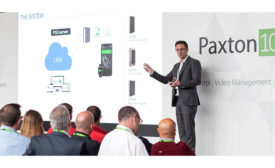SDM Blog

SDM Industry Voices
How Integrators can Build RMR With Cloud Video Surveillance
October 12, 2021
SDM Industry Voices
How Sales Management Software Supports Acquisition ROI
October 4, 2021
SDM Industry Voices
Balancing Security & Privacy with Facial Detection Technology
September 16, 2021
SDM Industry Voices
Nexkey 2021 Access Control Trend Review Shows a Shift to Mobile Access
July 29, 2021
SDM Industry Voices
Improving Application Security & End User Safety With Visual Indication
July 16, 2021
Get our new eMagazine delivered to your inbox every month.
Stay in the know on the latest security marketplace trends.
SUBSCRIBE TODAY!Copyright ©2024. All Rights Reserved BNP Media.
Design, CMS, Hosting & Web Development :: ePublishing

















Recent Comments
Wonderful Content! The way you describe the things...
amazing and very impressive dear check...
SOC Teams Protect Multi-Building Campuses
Smart Home Revolution
Benefits of Implementing 802.3bt